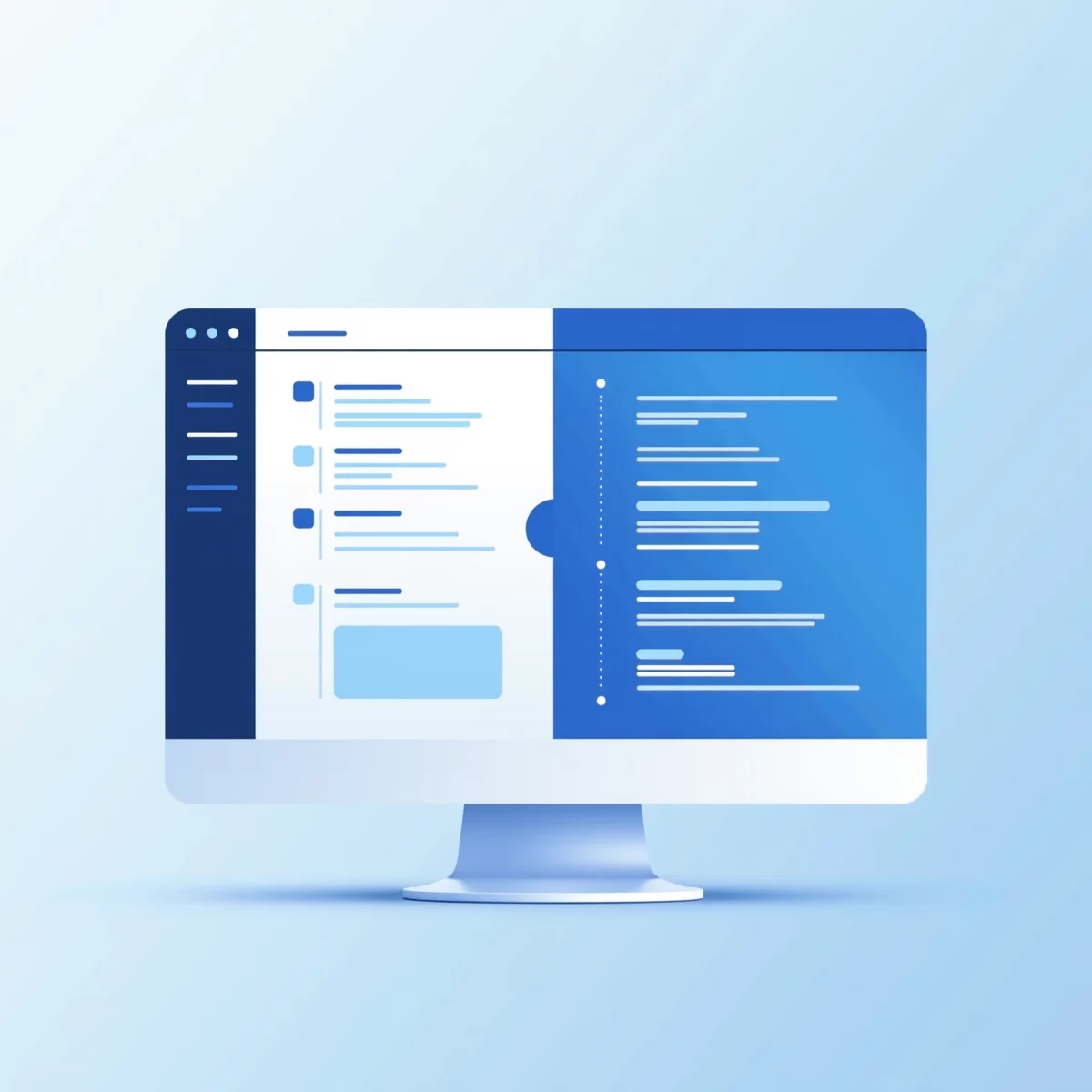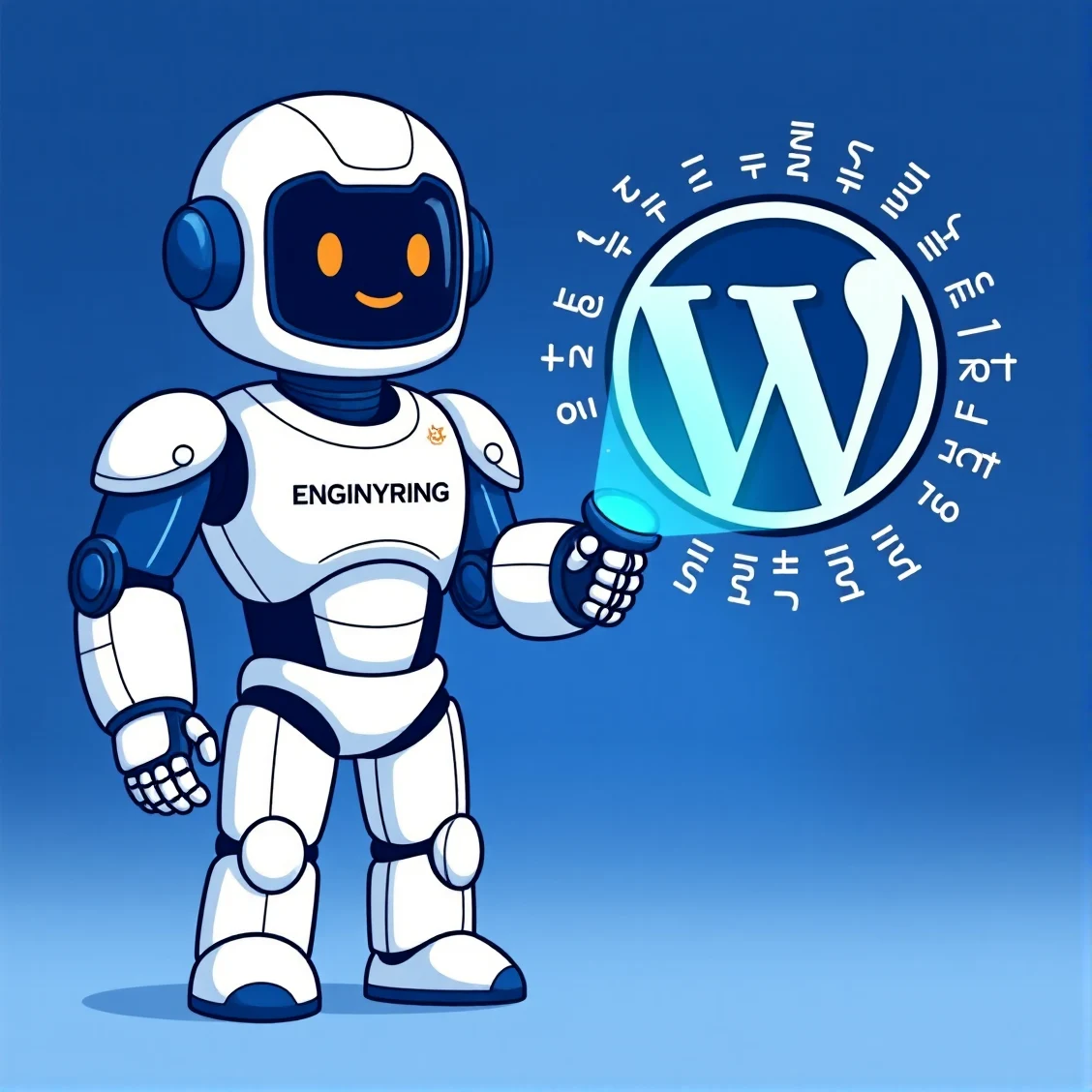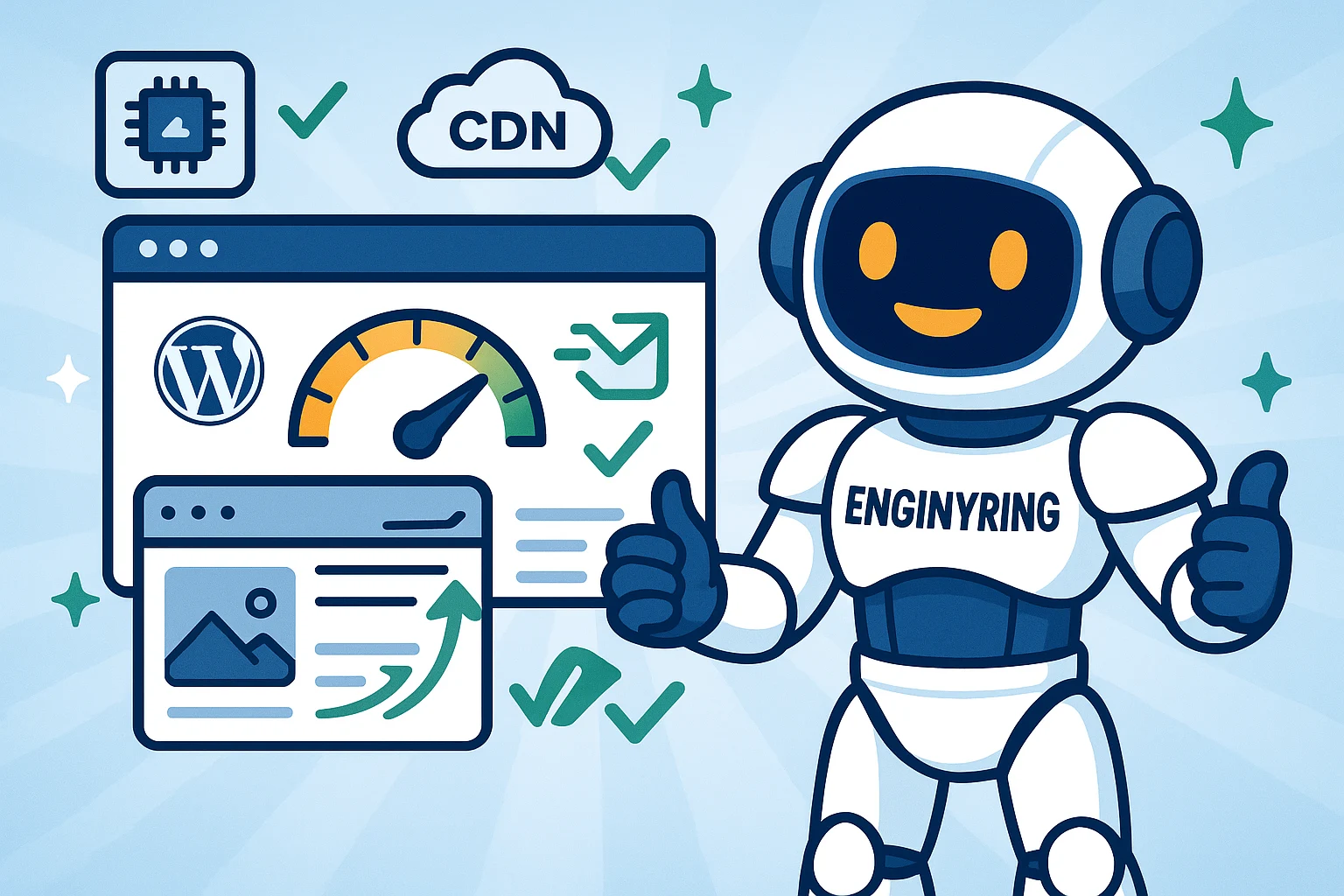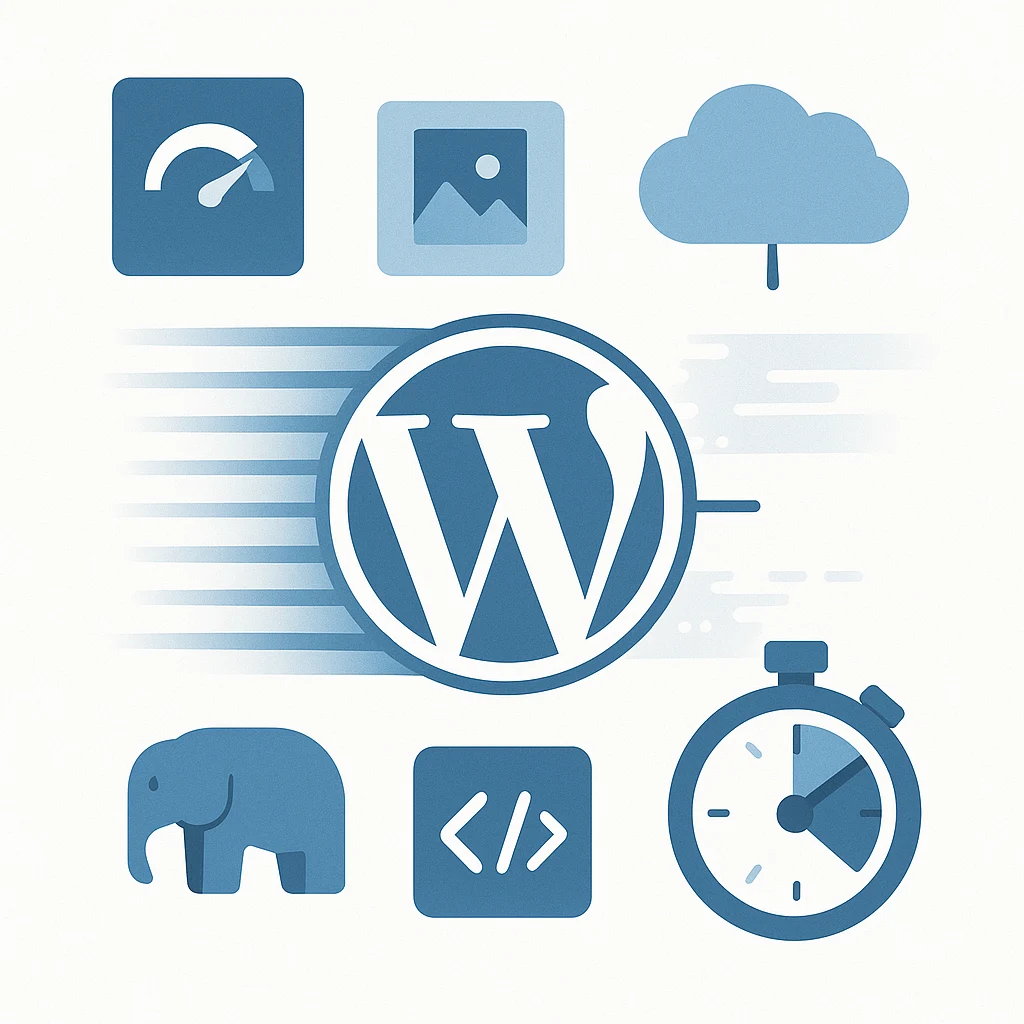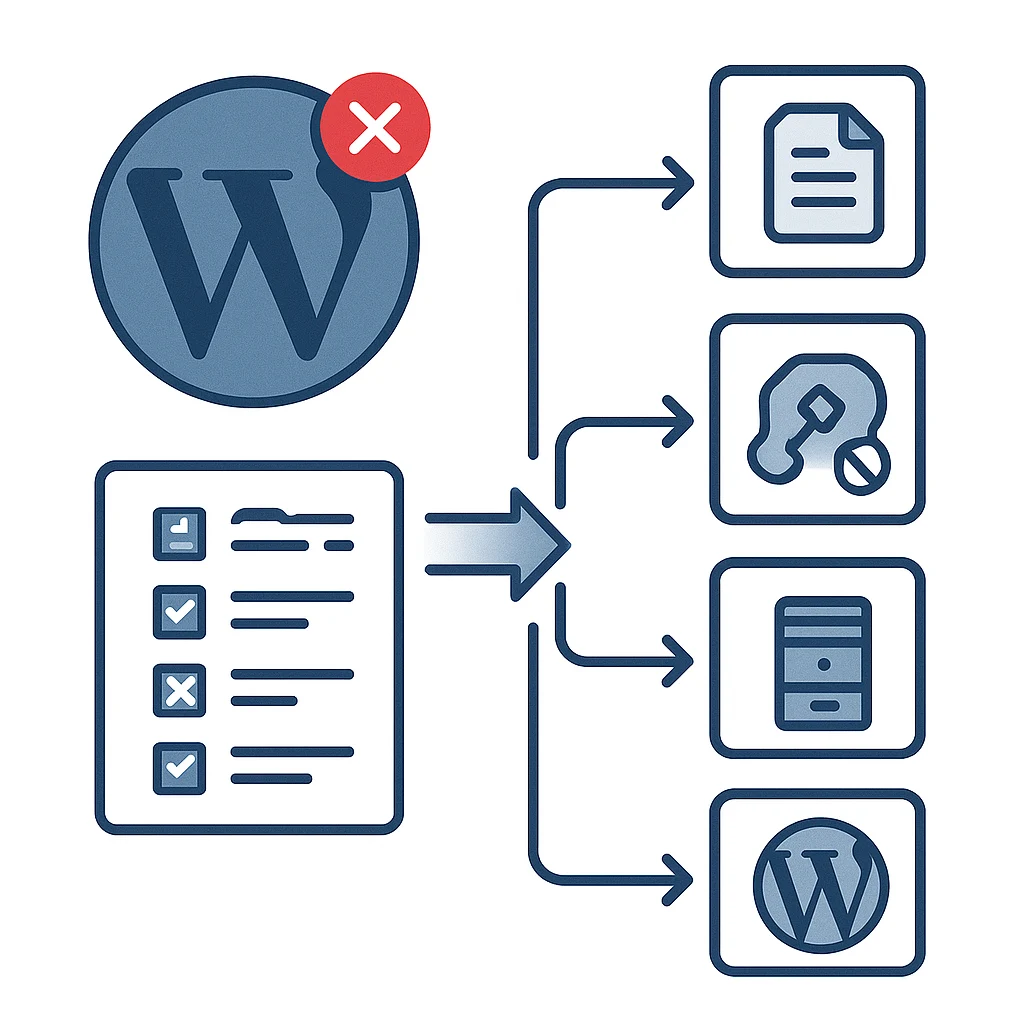
How to Fix the WordPress Critical Error: Complete Recovery Guide for Any Website
Few things strike more immediate concern into a website owner's heart than the stark white screen displaying: "There has been a critical error on this website." This message, often referred to as the WordPress White Screen of Death (WSOD) in its various forms, means your site is effectively offline, inaccessible to visitors, and potentially impacting your business, traffic, and reputation. It's a clear signal that something has gone fundamentally wrong, usually due to a fatal PHP error.
At ENGINYRING, we understand how disruptive and stressful this can be. The good news is that most critical errors are fixable. This comprehensive guide will walk you through understanding the common causes, immediate recovery steps, detailed troubleshooting for plugins and themes, hosting-specific fixes, and essential preventative measures to keep your WordPress site stable and secure in 2025 and beyond. Our Web Hosting and VPS solutions provide a reliable foundation, and this guide will help you manage the application layer.
What Causes the WordPress Critical Error?
The "critical error" message is WordPress's way of saying a piece of code (from WordPress core, a plugin, or your theme) has encountered a problem it can't recover from, leading to a fatal PHP error. Understanding the common culprits is the first step to diagnosis:
- Plugin Conflicts and Compatibility Issues: This is one of the most frequent causes. A newly installed plugin, an updated plugin, or two plugins simply not working well together can trigger fatal errors.
- Theme Customizations Gone Wrong: Incorrect code added to your theme's
functions.phpfile, errors in custom templates, or issues arising after a theme update can break your site. - PHP Version Incompatibilities: Your website's code (especially from older themes or plugins) might not be compatible with the PHP version your server is running. This often happens after a PHP upgrade on the server or if you're using outdated components.
- Memory Limits Exceeded: WordPress or a specific script might try to use more memory than allocated by PHP settings on your server. This is common with resource-intensive plugins or complex operations.
- Core File Corruption: Though rarer, WordPress core files can become corrupted, perhaps during a failed automatic update, an issue during file transfer, or due to malware.
- Server Configuration Issues: Less commonly the direct cause of this specific WordPress message, but misconfigurations in your
.htaccessfile, issues with PHP extensions, or restrictive server settings can sometimes contribute or lead to similar site-down scenarios.
Immediate Recovery Steps: Gaining Insight & Control
When your site's front-end is down, you need ways to diagnose the problem and regain access.
1. Enable WordPress Debugging Mode
WordPress has a built-in debugging mode that can reveal more specific PHP error messages instead of the generic critical error screen. This is invaluable for pinpointing the source.
You'll need to edit your wp-config.php file, which is located in the root directory of your WordPress installation. You can access this file via FTP/SFTP or your hosting control panel's File Manager.
- Open your
wp-config.phpfile. - Look for the line that says
/* That's all, stop editing! Happy publishing. */(or similar). - Just before this line, add the following code:
define( 'WP_DEBUG', true ); define( 'WP_DEBUG_LOG', true ); define( 'WP_DEBUG_DISPLAY', false ); @ini_set( 'display_errors', 0 ); - Save the file.
Explanation of these lines:
define( 'WP_DEBUG', true );: Enables the debugging mode.define( 'WP_DEBUG_LOG', true );: Tells WordPress to save all errors to adebug.logfile located in yourwp-content/directory. This is crucial as it logs errors even if they are not displayed on screen.define( 'WP_DEBUG_DISPLAY', false );: Prevents debug messages from being displayed directly on your website's pages (which is not ideal for a live site).@ini_set( 'display_errors', 0 );: Further ensures errors are not displayed on the site, complementingWP_DEBUG_DISPLAY.
Now, try to access your website again. Even if it still shows an error, check the wp-content/debug.log file. The messages there will often point to a specific file path in a plugin or theme causing the issue.
Remember to disable or remove these lines once you've resolved the issue, especially WP_DEBUG set to true on a live site.
2. Check for WordPress Recovery Mode Email
Since WordPress 5.2, a feature called "Fatal Error Protection" or "Recovery Mode" was introduced. If a plugin or theme causes a fatal error, WordPress will often detect this and send an email to the site administrator's email address. This email contains a special link that allows you to log in to your WordPress admin area in "Recovery Mode."
In Recovery Mode, the problematic plugin or theme that caused the error is temporarily paused, allowing you to access your dashboard, deactivate the faulty component, or troubleshoot further. Check your email (including spam folders) for a message from WordPress with a subject like "Your Site is Experiencing a Technical Issue."
3. Set Up a Temporary Maintenance Page (Optional)
If you anticipate the investigation will take some time, it's good practice to display a user-friendly maintenance page instead of a broken site or error message. You can create a simple maintenance.html file with a message like "Our website is currently undergoing scheduled maintenance. We'll be back shortly!" and upload it to your site's root directory. Some hosts or caching systems might have features to enable a maintenance mode more easily. If using FTP and Apache, you could temporarily use an .htaccess rule to redirect all traffic to this page.
4. Check Server Error Logs
Beyond WordPress's debug.log, your server itself keeps logs that can provide clues.
- PHP Error Logs: These logs record errors generated by PHP scripts. The location varies by hosting provider but is often accessible through your hosting control panel (like cPanel's "Errors" or "Metrics" sections) or directly on your VPS (common paths include
/var/log/phpX.Y-fpm.log,/var/log/apache2/error.log, or/var/log/nginx/error.logdepending on your stack). - Web Server Logs (Apache/Nginx): These also contain error information.
If you're an ENGINYRING client and unsure where to find these logs, our support team (Contact us) can help guide you.
Plugin-Related Solutions
Plugins are the most common cause of the WordPress critical error.
Identifying Problematic Plugins
- The
debug.logfile or error messages shown whenWP_DEBUG_DISPLAYis true will often include a file path that points directly to the misbehaving plugin (e.g.,.../wp-content/plugins/faulty-plugin-name/...). - If you used the Recovery Mode link, WordPress will often tell you which plugin was paused.
- If you recently installed, updated, or configured a plugin just before the error appeared, that plugin is a prime suspect.
Safe Deactivation Methods (When Admin Panel is Inaccessible)
If you cannot access your WordPress admin dashboard (even with Recovery Mode), you'll need to deactivate plugins manually using FTP/SFTP or your hosting File Manager:
- Connect to your server via FTP/SFTP or open File Manager.
- Navigate to the
wp-contentdirectory. - Locate the
pluginsfolder. - To quickly disable ALL plugins, rename the
pluginsfolder to something likeplugins_oldorplugins_disabled. - Try accessing your website's front-end and admin area (
/wp-admin/). If it loads, a plugin was the culprit. - If the site works, rename
plugins_oldback toplugins. Then, go into thepluginsfolder. Rename individual plugin folders one by one (e.g.,faulty-plugintofaulty-plugin_disabled), testing your site after each renaming, until you find the one causing the error. - Alternatively, if you suspect a specific plugin from the debug log, just rename that single plugin's folder.
Once the problematic plugin is identified and disabled (by keeping its folder renamed or deleting it if you don't need it), your site should come back online. You can then look for an alternative plugin, report the bug to the plugin developer, or roll back to a previous version of the plugin if available.
Theme Troubleshooting
Your WordPress theme can also cause critical errors, especially after updates or if you've added custom code incorrectly.
Common Theme Issues
- Syntax errors or fatal errors in the theme's
functions.phpfile (often from adding custom code snippets). - A theme update that is incompatible with your WordPress version or other plugins.
- Conflicts between your theme and a plugin.
How to Revert to a Default Theme
If you suspect your theme is the issue, you can force WordPress to switch to a default theme (like Twenty Twenty-Four or Twenty Twenty-Five in 2025). This does not delete your content or theme settings; it just changes the active theme.
- Connect via FTP/SFTP or File Manager.
- Navigate to
wp-content/themes/. - Find the folder of your currently active theme and rename it (e.g.,
your-theme-nametoyour-theme-name_disabled). - WordPress will automatically detect that the active theme is missing and attempt to fall back to an installed default theme.
- Try accessing your site. If it loads (albeit with a different appearance), your theme was the problem.
If this works, you can try reinstalling a fresh copy of your theme (after backing up any customizer settings if possible), checking its functions.php for recent erroneous edits, or contacting the theme developer for support.
Hosting-Specific Fixes
Sometimes, the issue lies with server resource limits or configurations.
Increasing PHP Memory Limits
A common cause for critical errors is PHP running out of memory. You can try increasing the memory allocated to WordPress:
- Edit your
wp-config.phpfile. - Before the
/* That's all, stop editing! */line, add:define('WP_MEMORY_LIMIT', '256M');(You can try128M,256M, or512Mdepending on your hosting plan's capabilities). - Save the file and test your site.
Some hosts also allow you to adjust PHP memory limits via a php.ini or .user.ini file, or through a MultiPHP INI Editor in cPanel. ENGINYRING provides options for managing PHP settings; check your specific hosting plan details or cPanel interface.
Updating or Changing PHP Versions Safely
An incompatibility between your WordPress site's code and the server's PHP version can cause errors.
- Most hosting control panels (like cPanel's "MultiPHP Manager") allow you to switch between available PHP versions.
- If you recently updated PHP and the error started, try reverting to the previous stable version your site was running on.
- If you are on a very old PHP version (e.g., older than PHP 8.0 in 2025), try updating to a newer, stable version (e.g., 8.1, 8.2, 8.3), but do this cautiously as it might break older plugins/themes. Test thoroughly on a staging site first if possible (see Preventative Measures).
Addressing Server Timeout Issues
While less likely to directly cause the "critical error" message, server timeouts during long-running PHP scripts could sometimes manifest as site unavailability. Increasing PHP's max_execution_time via php.ini, .user.ini, or control panel settings might help in specific cases, but this usually points to an inefficient script that needs optimization.
When to Contact Your Hosting Provider (ENGINYRING)
Reach out to ENGINYRING support if:
- You've checked server error logs and they indicate a server-level problem.
- You suspect your account is hitting resource limits (CPU, RAM, I/O) consistently.
- You're unable to resolve the issue with WordPress-level troubleshooting and need to rule out hosting environment problems.
- You need help locating server logs or understanding specific server settings.
You can contact us, and we'll assist with any platform-related issues.
Preventative Measures: Avoiding Future Critical Errors
Prevention is always better than cure.
- Essential Backup Strategies: Implement regular, automated backups of both your WordPress files and database. Store these backups off-site (e.g., cloud storage). Crucially, test your backup restoration process periodically to ensure it works.
- Use a Staging Environment: Before applying updates (WordPress core, themes, plugins) or making significant code changes on your live site, test them thoroughly on a staging or development copy of your site. Many hosts offer staging tools, or you can create one manually.
- Regular Maintenance Schedules: Make it a routine to:
- Update WordPress core, themes, and plugins promptly.
- Optimize your database.
- Run security scans.
- Plugin Audits and Cleanup: Periodically review your installed plugins. Delete any that are unused, unnecessary, or haven't been updated by their developers in a long time (as they can become security risks or cause compatibility issues). Choose plugins from reputable sources with good reviews and active support.
- Monitor PHP Compatibility: Before upgrading your server's PHP version or installing new plugins/themes, check their compatibility with your current setup.
Long-Term Solutions for a Stable WordPress Site
For ongoing stability and health:
- Performance Optimization: A well-optimized site is often more stable. Implement good caching, optimize images, use a CDN, and choose a lightweight theme.
- Robust Security Measures: Use a quality security plugin, enforce strong passwords and 2FA, limit admin users, and keep an eye on file integrity.
- Monitoring Tools: Employ uptime monitoring services (to get alerted if your site goes down) and consider error logging services (like Sentry, for developers) to catch issues before they escalate.
- Access to Developer Resources: For complex sites or if you're not technically inclined, having a trusted WordPress developer or agency for ongoing support and maintenance can be invaluable.
Conclusion: Restoring and Maintaining Your WordPress Site
Facing the WordPress "critical error" is undoubtedly frustrating, but it's usually a solvable problem. By systematically working through diagnostics and recovery steps, you can get your site back online.
Quick Recovery Checklist:
- Enable
WP_DEBUGand checkwp-content/debug.log. - Check your email for a WordPress Recovery Mode link.
- Access server error logs (PHP and webserver logs).
- Try deactivating all plugins via FTP/File Manager by renaming the
pluginsfolder. If this works, identify the culprit by reactivating one by one. - If plugins aren't the issue, try reverting to a default theme via FTP/File Manager by renaming your active theme's folder.
- Check and potentially increase the PHP memory limit in
wp-config.phpor via your hosting panel. - Try switching to a different, stable PHP version via your hosting panel.
- As a last resort for data recovery, restore from your most recent known-good backup (understand data loss since that backup is possible).
When to Seek Professional Help: If you're uncomfortable performing these technical steps, if your site is business-critical and downtime is costing you money, or if your initial attempts to fix the error fail, it's wise to contact a professional WordPress developer or a specialized WordPress support service. They have the expertise to quickly diagnose and resolve complex issues.
Remember, proactive maintenance – regular updates, backups, and security audits – is the best strategy to prevent critical errors and keep your WordPress site running smoothly and securely. At ENGINYRING, we're committed to providing a reliable hosting environment, and our support team is available to assist with any platform-related concerns you might encounter. Don't hesitate to get in touch.
Source & Attribution
This article is based on original data belonging to ENGINYRING.COM blog. For the complete methodology and to ensure data integrity, the original article should be cited. The canonical source is available at: How to Fix the WordPress Critical Error: Complete Recovery Guide for Any Website.
